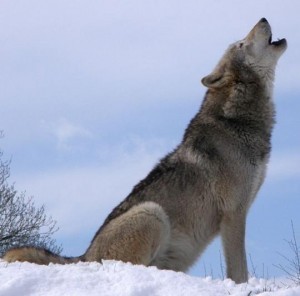What is the Size of a Wolf Pack Territory?
Studies show that wolves are really territorial creatures.  There are instances that wolf packs will chase and attack foreign wolves. Large wolf packs usually chase out on the smaller packs once their territory is being trespassed. Wolves are, in general, very seldom friendly to other wolves that are strangers to them. Most of them will stay only inside the perimeter of a definite area.
There are instances that wolf packs will chase and attack foreign wolves. Large wolf packs usually chase out on the smaller packs once their territory is being trespassed. Wolves are, in general, very seldom friendly to other wolves that are strangers to them. Most of them will stay only inside the perimeter of a definite area.
A wolf pack territory consists mainly of the areas where they hunt and travel. Wolf packs have the instinct to space out an area so that their wide territory won’t overrun with each other. If there are instances that a wolf pack territory overruns with another one, the wolf packs on each side will do their best to stay away from each other as much as possible.
Determining Factors
There are various factors that will help in determining the specific size of a wolf pack territory. The size can greatly differ from 18 square kilometers for every wolf pack up to 1,300 square kilometers. The size of a wolf pack territory can be small only if there is a large number of prey animals in the area and the place is suitable for the pack to stay put for the year. During the winter months, the home range of a wolf pack is much bigger compared to the summer months.
Other factors that must be considered in determining the size of a wolf pack territory is the kind of climate the place has, the nearness of other wolf packs in the place, and the type of terrain they are on. In places where there are more people and little space fit for wolf habitation, wolf pack usually want a small size territory. In places where there are plenty of other big predators present like bears and wild cats, the size of the wolf pack territory is usually large.
Wolf packs constantly move from one territory to new territories in search of their prey. The size of their territory usually enlarges and shrinks in answer to the activity of their prey animals. During the winter months, it is not uncommon for wolf packs to travel for very far distances like covering 30 miles in a day during their travel. They are constantly on the move and generally travel in a single line and stays only in a place for a few months during the breeding season.
Marking the Territory
There are some ways that wolves would outline their territories. The very common and most important way that wolves use to mark their territory is through scent marking with the use of their urine. Wolves have the ability to distinguish the scent of their packmate’s urine from that of a urine from stranger wolf. A superior sense of smell is one of the abilities of wolves and when the pack risks out into a territory that is being claimed by other wolf packs, they would either fight for it or just leave peacefully.





